So you’re thinking about implementing a UX strategy at your company – whether it’s through outsourcing all the work, getting an agency to audit your current site and train your team, or by recruiting a UX team directly.
Before deciding which path to follow, or even if the time is right for your organisation for any large-scale solution, it’s important to gauge your organisation’s UX maturity.
Hostility
In the early days of computing it was too expensive to run user tests and change the hardware to suit their needs. This, coupled with the fact everyone was learning how computers worked, meant there was more than a small element of “We’ll build the system and they’ll learn how to use it”.
It made sense then, but the days of thinking the user should bend to your design or development desires should be confined to the past. If your company still has the attitude that they know best when it comes to their website (or any other element of customer experience, for that matter), then forget about implementing a UX process. If people don’t want to listen, they won’t change, so UX spend would be a waste.
Instead, try to start to seed the benefits of UX, or make sure the organisation can see how its bottom line is being impacted by its outdated attitude.
Developer-Centered User Experience
In UX, there’s the well-worn and never-not-true phrase that “you are not your customer”. Despite that, the first phase that businesses looking to focus more on UX will adopt is to have their internal design and development team use their intuition to make tweaks. For a technical project, like an application aimed at other developers, this can work as they’re talking to people of a similar mindset. But for everyday sites and applications, the reality is your team will have far more knowledge than your average user and likely won’t come close to resolving any pain points – and that’s if they even successfully identify the correct pain points to begin with!
Still, reaching this stage means your company at least cares about giving their customers what they want, even if they’re going about it the wrong way. You’re getting there!
Piecemeal
Once a business realises it shouldn’t solely rely on designer / developer ideation for UX, it will usually start undertaking small, independent UX test with no defined budget or overarching goal. It’s not ideal, but it does work because even small UX tweaks can yield good results. However, in order to start to move your organisation to a more formalised process, it’s important that your bosses can see how much work went into those improvements. Save your initial plans, designs or hypotheses to show what went into the process, lest they think it was just a matter of guesswork or common sense that went into delivering the results!
Dedicated budget
In an ideal world, the great results of stage three will catch the eye of a decision-maker, who realises how much can be achieved by focusing on UX. Although the budget set aside at this stage may be small – dipping their toe into the UX waters – it’s a step in the right direction towards a larger-scale, formalised UX strategy.
However, while the progress is promising, this stage’s lack of focus means it’s far from perfect. UX at this stage is seen as a magic bullet to be used sparingly, often late in the day when the app, website or interface has already been built (rather than prior to the design stage when errors are easier to fix).
This means management may be less inclined to fix any issues that user testing has flagged up because a chunk of time and money has already been spent on the project. Cognitive biases may even kick in to persuade the bosses that the issue doesn’t really exist – that the person flagging it up during testing wasn’t really in your demographic, or that one person raising an issue means it’s then at fault, not the system.
The problem with this stage is that, with a budget assigned to UX, you need to show real ROI, and that can be difficult to do if testing is introduced late in the day. This can be done, though, by ensuring there are several ongoing UX projects all working together to deliver key company goals like better engagement, fewer customer service tickets etc.
Managed Usability
Your business has now reached the stage where UX takes a more central, integrated role in your organisation. Although the previous phase had a dedicated UX budget, it can be removed at any point with very little warning. By the time you reached managed usability, the budget and process is a little safer. As well as a UX manager, you may have an official UX group and / or a regular testing panel, and this will grow over time as UX becomes more embedded.
Often the focus at this stage will still be on user testing later in the day when it may be too late to react. However, studies are usually conducted more consistently because the usability group refines its methodology as members learn from each other. They are also better placed to maintain ongoing UX reports to build their findings on, something the ad hoc approach of stage four often finds difficult.
Finally, stage 5 is the first stage at which the company has a person — the UX manager — whose job it is to think about user experience across the organisation and across design projects; the point at this level is to ensure that high design quality and good usability follow from a managed process as opposed to being a sometimes-on, sometimes-off process.
So you’re definitely making headway at this stage. However, the UX budget here is likely to be too squeezed to implement all recommendations, with the onus on the UX manager to select the projects they feel with have the best results. For that to change, you need to enter stage six.
Systematic User-Centered Design (UCD) Process
By now the company has recognised and acknowledged the need for a user-centric design process. Early research prior to any design work is now the norm, and processes will be in place for management to track user experience quality throughout design projects and across releases. These experiences become KPIs within the business, indicating the increasingly serious nature with which they’re treated.
Key projects should now be receiving sufficient resources to conduct a range of user research. The very fact that projects are prioritized according to the business value of their user experience is yet another sign of this maturity level. Finally, even projects that don’t get a lot of UX resources go through at least some form of design review before they’re approved for release.
To progress beyond this stage, you must convince all managers and team members that user experience is part of their jobs and that user research results help them do better and more satisfying work. This leap is much like the one you faced right back in stage two, where your goal was to evangelise the benefits of UX rather than simply ask for more budget.
Integrated User-Centered Design
The early-stage field research that started creeping in during the previous stage is now more prominent. Each development lifecycle step is now steeped in user data, including the project definition itself and the requirements phase. Quantitative metrics are now in place to do a better job of tracking improving UX quality, and pre-defined goals are set which must be met before designs are approved.
This stage also sees the point at which businesses start to use customer feedback and user insight to determine what they should create or build, rather than simply as a way to test whether what they’ve already built is working as it should. This helps focus your budget to the areas your customers want you to invest in, rather than guessing where you should spend your time and money.
User-Driven Corporation
You’re not likely to reach this stage – as most don’t – and reaching the previous stage will be enough to delight your customers and improve your business. The final stage describes a company that uses customer data and feedback to determine its overall direction and priorities. This means user testing goes far beyond looking at online matters – designing guest rooms and lobbies for a hotel chain, for example. It uses the same methods in the UX toolkit, but takes it way beyond the norm. Don’t worry if you never reach this point! For many companies, this stage isn’t actually practical let alone achievable. But still, it’s good to dream!
In part two, we’ll take a brief look at how to level up at each stage, and how long organisations typically stay at each stage of UX maturity so you know what you may be up against!











